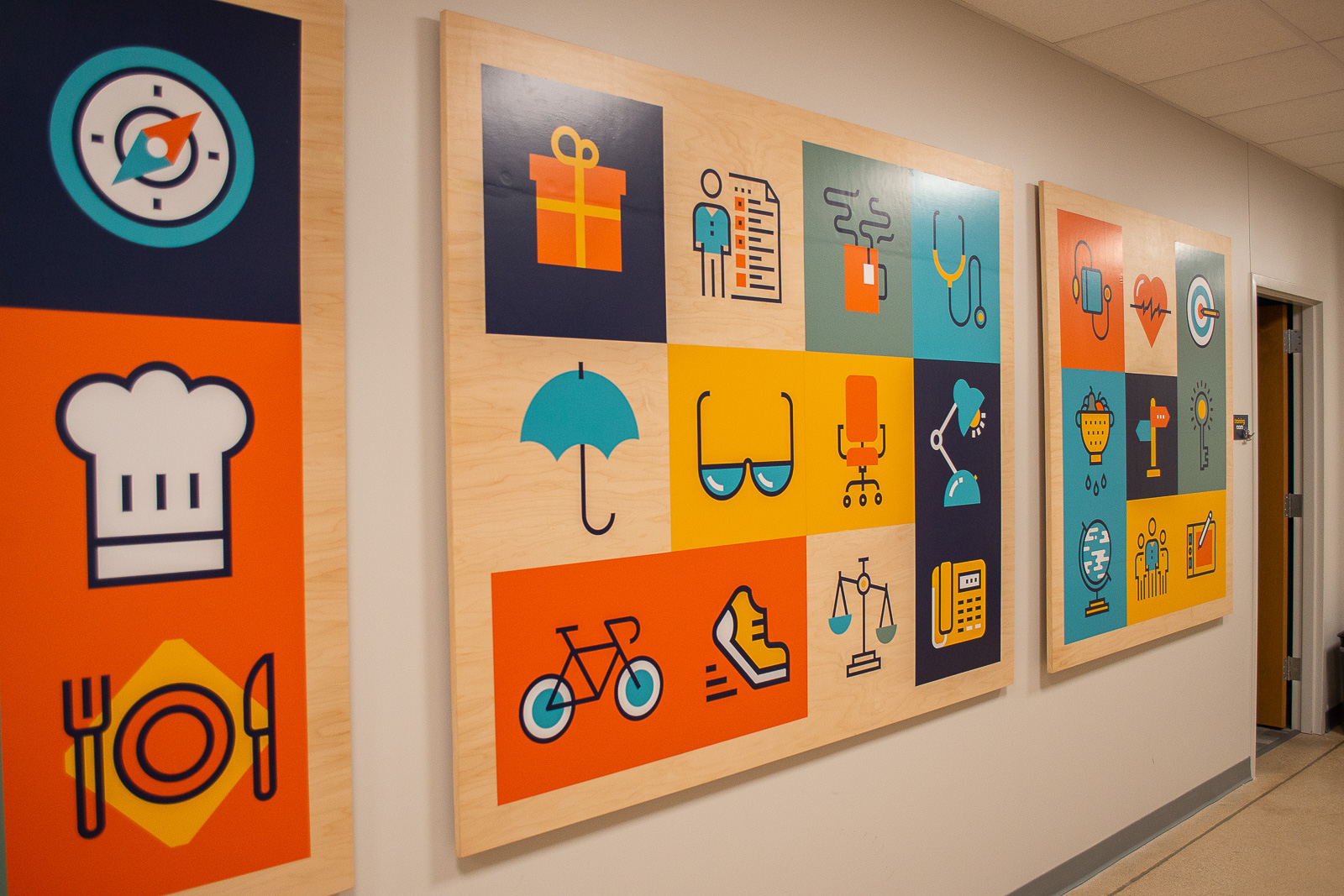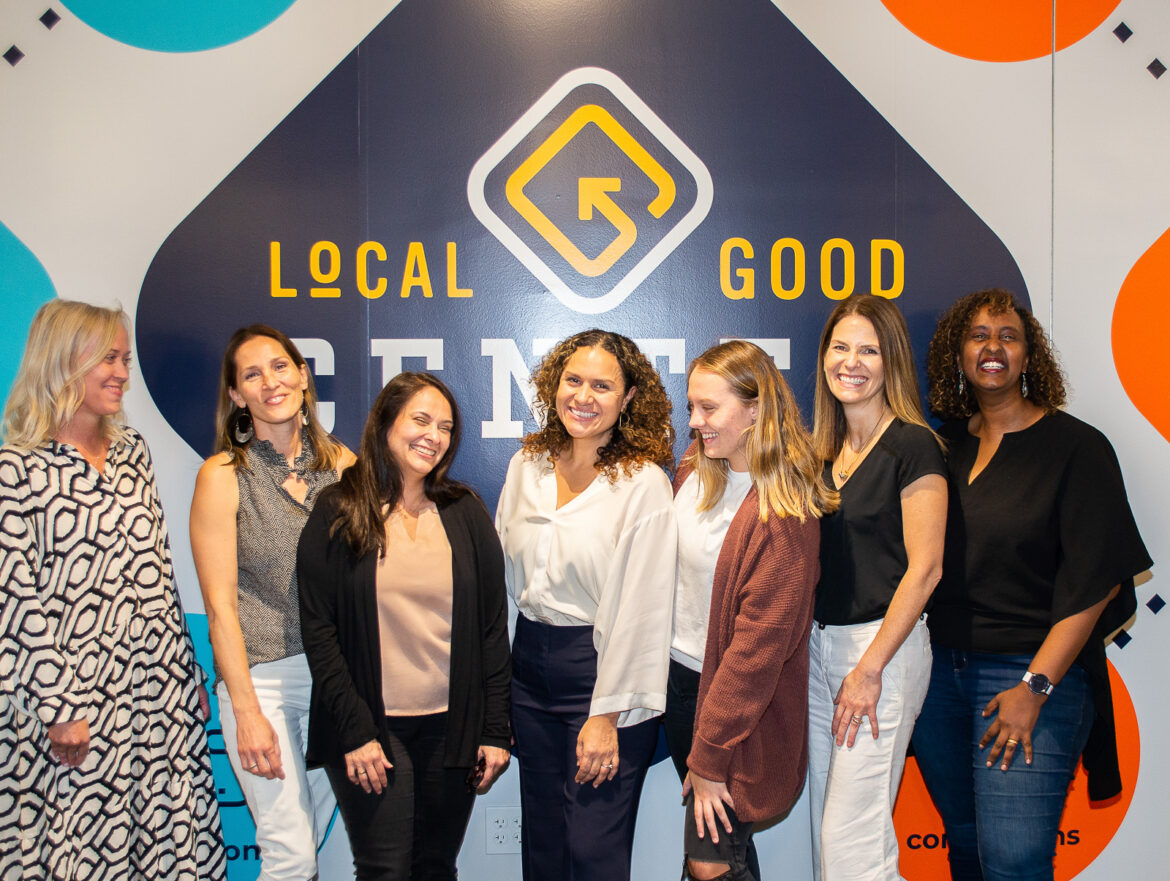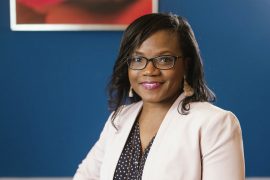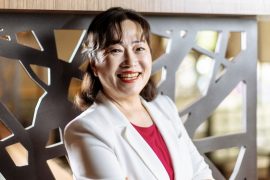It started with education. Learning English, Chase Oaks Church administrators thought, would be a pathway to success for many immigrants. So the church started a family center that taught English classes in Dallas and Collin counties.
However, as the center learned of more and more barriers to success for immigrants and English learners, the need for services grew too large for the church’s buildings.
In 2021, the program reopened as the Local Good Center, which grew to provide four pillars of service: education, job readiness, wellness and advocacy.
“The strength of Local Good is creating community with the people who come through our doors,” says Simret Ingram, education director for LGC.
“Because we’re relational, we are creating a bridge for both volunteers and those who are in need. It really creates a unique way of relating to those that we typically wouldn’t have access to.”
Each pillar at the Local Good Center comes full-circle with the others — people come in wanting to learn English to get better jobs, which they can do with job readiness classes. Preventative healthcare services and wellness courses ensure students are healthy enough to attend both work and the program.
LGC is volunteer-based with directors of each program finding professionals in each category to volunteer and assist the students.
“It’s not just ‘Oh, come greet,’” says executive director Julissa Estrada. “We do need people to greet, and that is important, but we also have really unique opportunities where people can use their own area of gifting and specialty to really serve as registered dietitians, nutritionists, personal trainers. So people who do this for a living can give back in that area.”
The Local Good Center team is also looking at partnerships with organizations in the community. LGC currently partners with Emily’s Place, a domestic violence center for women and children.
“One of our goals is to work with other nonprofits. Instead of duplicating services, we can come alongside and complement a lot of the work that they do,” Estrada says. “While they focus on housing and counseling, we help with job readiness and the education piece.”
To see what each pillar of LGC does and how Planoites can become involved, we’ve talked to each of the program directors about their respective programs:
Education
As the Local Good Center grows and increases the classes it offers, the director team seeks to find and eliminate barriers to education and job readiness.
One of these barriers is childcare. Since most of the first classes of students were young moms, finding childcare was necessary to attend the classes. So when LGC opened its new building in 2021, it added a children’s wing with classrooms for babies through preschoolers.
“It becomes a two-generation learning system. We’re teaching the adults; we already have their littles,” Estrada says. “If we’re just taking care of them, then we are missing an opportunity. We also need to teach.”
Each of the three classrooms is filled with learning material, including letters, numbers, shapes and colors for five-10 children per class. When the children come in, they have backpacks, homework (i.e. coloring or tracing shapes) and are taught the importance of being on time.
“Most American children have gone to Mother’s Day Out since they were two or three. They’re in little programs with early-learning intervention,” Estrada says. “International kids don’t do that. They stay at home until they’re five, and then they go to kindergarten, and at that point they’re already behind.”
In the adult wing, there are several classrooms that play host to five levels of English classes, computer classes, resume writing, mock interviews and preventative healthcare classes.
The ESL courses currently serve people with around 17 language backgrounds, says executive director Simret Ingram.
“The majority of the courses are with Spanish, but we are also getting Arabic, Farsi, Hindi, Mandarin, Japanese, Korean. The higher the level, the more diverse the languages are, but the lower-level courses tend to be heavily Spanish,” Ingram says.
“Even that is changing as we speak. We are getting a lot more Arabic speakers and Farsi speakers who are in fairly beginner stages of learning. Success is really in the word of mouth — when you get one or two people together, they tend to expand and be more comfortable bringing in their friends.”
In order to take classes at the Local Good Center, potential students apply to determine what level their English is at. Based on that level, students are placed in classrooms with others who are in the same place in their English-speaking journey as long as spots are open. Spots are first-come, first-serve, though priority is given to stage of life. (Young moms who need childcare for their classes are often prioritized due to the Local Good Center’s unique childcare program.)
Advocacy
One of the Local Good Center’s programs outside of education is the work it does with the foster community. The advocacy pillar of LGC provides information sessions on becoming foster parents, creates activities for foster families to participate in, hosts respite nights for foster families and creates life skills workshops for those aging out of foster care.
“Something else that we came across was the foster care system and learning how we need to advocate for people in the foster care system as a whole,” Estrada says.
Each month, the Local Good Center hosts respite nights, where foster, adoptive or kinship parents can drop off their child with background-checked volunteers for a safe night of activities and fun while the parents have a night to themselves.
Because the program is volunteer-based, the Local Good Center is always looking for volunteers willing to work with children, says advocacy director Jennifer Creech.
In addition to assisting foster and adoptive parents, the advocacy director and volunteers also support a program titled Mental Health: Early Recognition, in which LGC collaborates with Lifeologie Counseling to conduct workshops and training on assessing and de-escalating mental health situations.
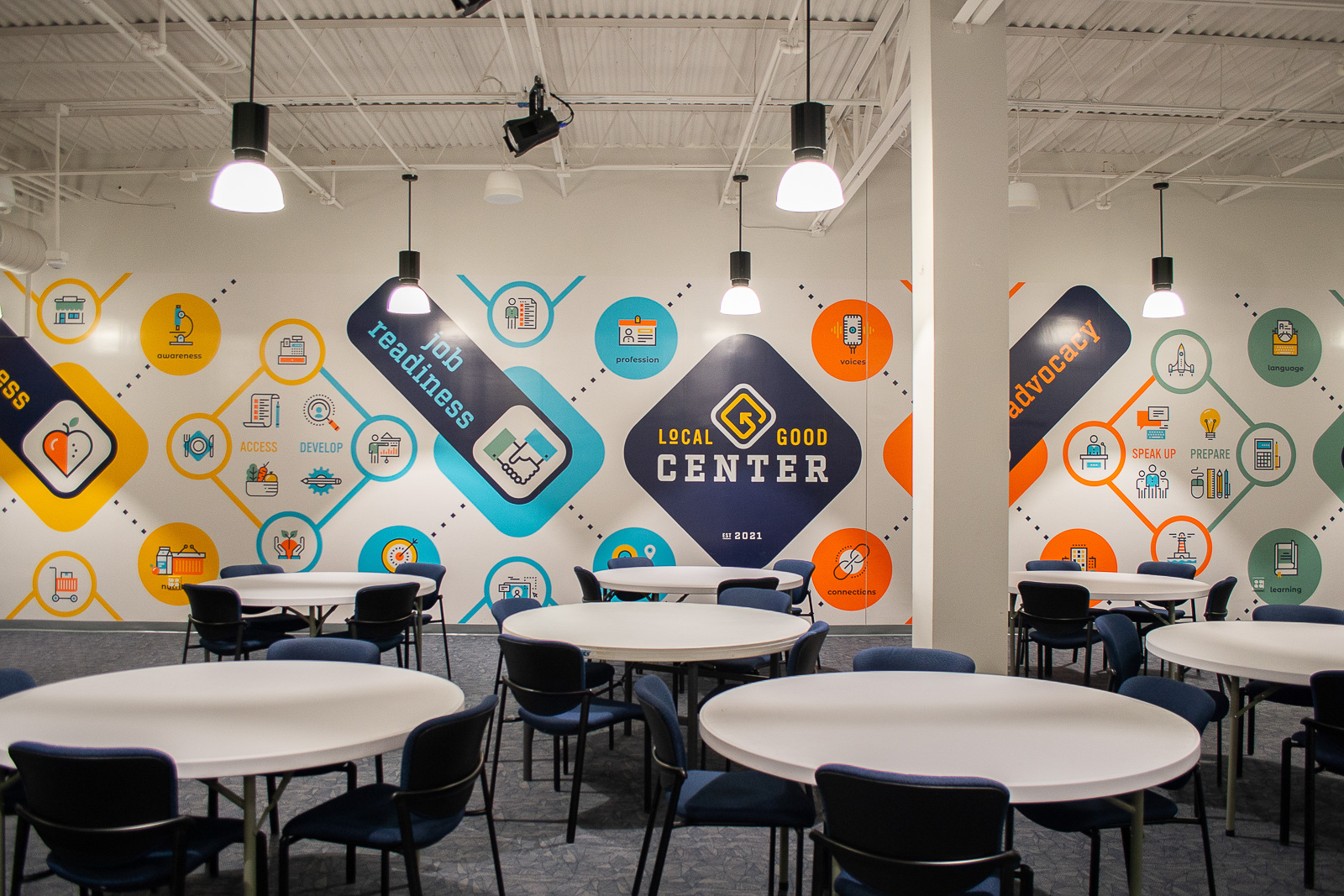
Job Readiness
Job readiness is more than just learning the language at the Local Good Center. Classes are routinely offered in resume writing, interview skills, Microsoft Word, Microsoft Excel and career development tools such as LinkedIn and Indeed.
“For me, it’s really amazing to see that love. People might not like working with kids, but they might be a professional who can do something else,” says job readiness director Maya Quinn. “I have three gentlemen who really love computers and have a passion for Excel, which is marvelous. They’re super-patient and have created a customized class.”
The Local Good Center is also able to assist students who attend classes in applying for jobs with community partners.
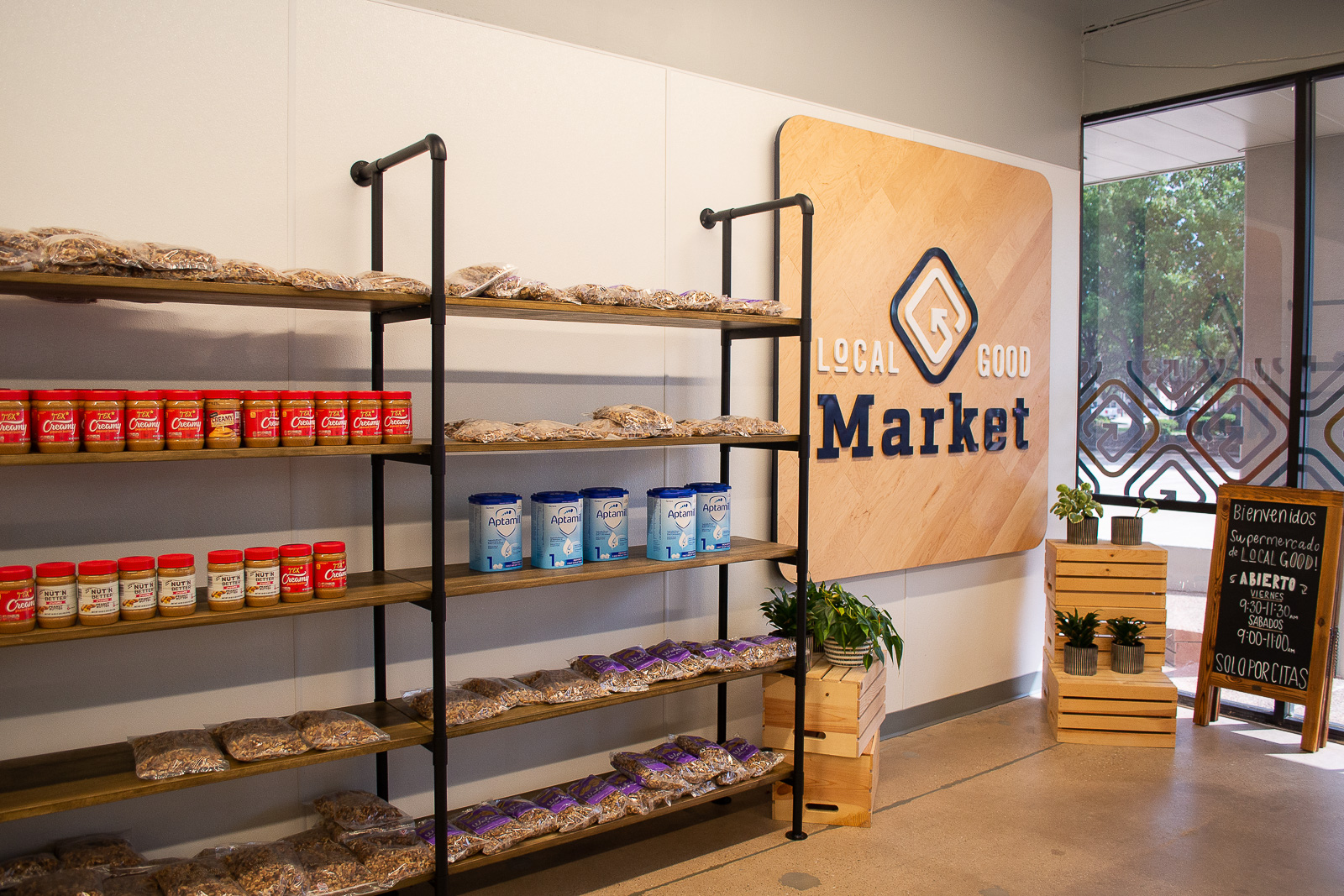
Wellness
Part of the wellness program is establishing preventative healthcare. Volunteer nurses come into the classrooms and teach everything from when to take your baby to the hospital to how to check your blood sugar.
In the community room, the Local Good Center has a full kitchen, where volunteer teachers — often doctors, nutritionists or licensed dietitians — can demonstrate how to cook healthy meals that taste good.
“I need volunteers who can help me with cooking classes. Nutritionists. Exercise instructors,” says wellness director Nicole Antovoni. “We kind of pass [volunteers] around, because we find that maybe they love kids or they have a foster family but they’re also a personal trainer, and so [Creech] will pass them to me.”
In addition to wellness classes, the Local Good Center also provides a market for those who take classes. Alongside the market is also a medical office, where medical professionals can provide vaccines and discuss preventative healthcare without the pressure of a doctor’s office.
In the market every two weeks, families can peruse shelves stocked with nutritious foods for a variety of dietary restrictions. While many of the basics come from a partnership with North Texas Food Bank, others come from donations from Sprouts and local farms.
“There are lots of opportunities for people to engage by donating food,” Estrada says. “We try to supplement with any kind of food that is hard to get at a food pantry, like non-dairy milks, gluten-free food or any type of vegetables.”
